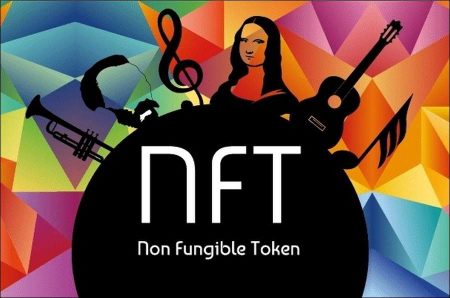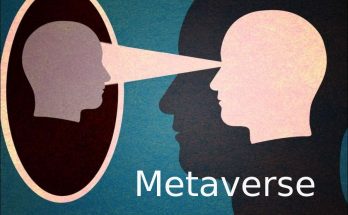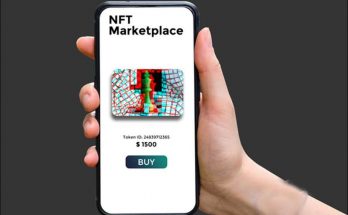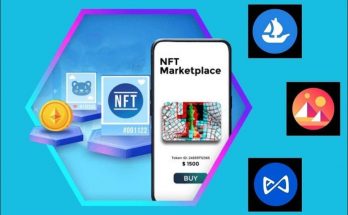A very detailed look at NFT transactions. NFTs are game-changing in terms of how creative content, art, and intellectual property are handled. Just as cryptocurrencies are changing traditional finance by reducing the need for intermediaries, NFTs have the potential to shift the balance from middlemen to creators.
The NFT market is growing at a significant rate, and the prices of popular projects are increasing with the number of collectors joining the market. Total NFT markets grew a lot in Q3 2021. After shrinking slightly in the last quarter of 2021, it continued to The NFT market is growing at a significant rate, and the prices of popular projects are increasing with the number of collectors joining the market. Total NFT markets grew a lot in Q3 2021. After shrinking slightly in the last quarter of 2021, it continued to grow significantly in 2022.
NFT artworks and collectibles are the key drivers of the market. The top 20% of collectors own the vast majority of the market in terms of both market cap and number of NFTs (pareto principle). Big collectors dominate the market. 2% of wallets own 50% of NFTs. When the first 5 transactions are examined, it is seen that the average transaction value of an NFT has increased by ~60% in dollar terms compared to the previous transaction.
In their simplest definition, NFTs are unique digital assets that can be bought and sold, stored on the blockchain, a form of digital ledger. NFT types can range from photos to videos and audio files. 2021 has been the year of NFTs in many ways. With an unprecedented rise, NFT markets have enabled artists (creators) to easily monetize their works and collectors to purchase them effectively.
Although NFTs seem to have emerged suddenly, the concept of NFT first emerged in 2012, when Meni Rosenfeld published his article explaining Colored Coins. Colored Coins offered methods to prove ownership, manage and represent real assets on the Bitcoin blockchain. The first known NFT is ‘Quantum’, minted by Kevin McCoy in May 2014. ‘Quantum’ sold for US$1.4 million in November 2021.
Pioneering NFT projects such as art blocks and Cyrpto Punks have played an important role in the development of the NFT ecosystem. Artblocks are an NFT project, a creative art form that produces original digital artworks using an algorithm. Crypto Punks, on the other hand, is one of the first profile picture (PFP) types of NFT projects, and can be used as a profile picture on social media or in games.
Today, creators are the most important drivers of the NFT space. Every work of artists such as Pak and Beeple attracts great attention. Artists’ works are traded at high prices, far beyond what popularity can explain. Beeple’s NFT artwork called ‘First 5000 days’, sold for 69 million US dollars at the world-famous Christie’s auction house, is just one of many examples.
NFT artworks have been criticized on many platforms, and the new aesthetics of NFTs as a form of art have been heavily discussed. Artist Manuel Rossner explains NFTs as follows: “NFTs are to the web what containers are to the physical logistics industry, with all their digital advantages. The potential to move power away from the monopoly of one platform is what excites me most about NFTs and blockchain. Everyone agrees that minting a digital file as an NFT doesn’t make it a work of art, but there are some very good NFT works of art on these platforms. .
The Ethereum blockchain leads the NFT market, but due to high Ethereum transaction fees, NFT transactions appear to be increasing on other blockchains such as Solana and Tezos. Since the beginning of 2021, the market has grown exponentially in a year. It increased from US$ 100 million in 2020 to US$ 2 billion in the first half of 2021, and then reached US$ 22 billion in the first 9 months of 2021.
NFT markets; It was very small compared to traditional art markets, worth US$64 billion in 2019 and approximately US$50 billion in 2020, but it has experienced phenomenal growth. NFT markets have not only shifted some of the supply from traditional art markets to NFT markets, but have also created their own supply and demand, bringing in supply from broader entertainment markets such as the US$175 billion gaming industry. The shift in supply and demand from traditional art markets to NFT markets has been much more limited than the growth of the market itself.
The NFT excitement may have calmed down a bit, but the technology behind it is extraordinary. Even regulating artists’ copyrights with NFT’s smart contract system is a game-changing development in itself. Understanding this technology and its potential applications in the arts, entertainment, and broader business is critical.
Hits: 103





